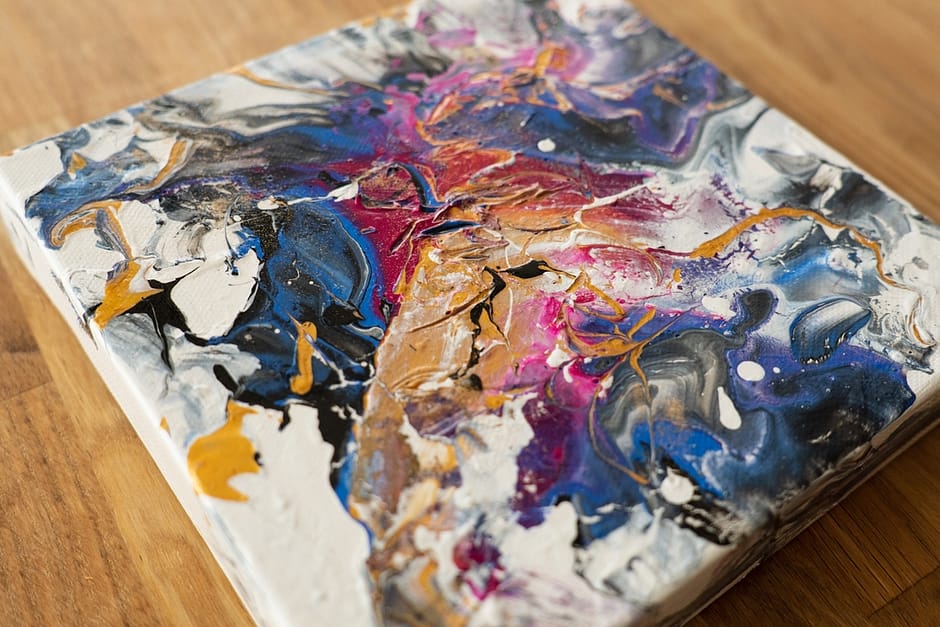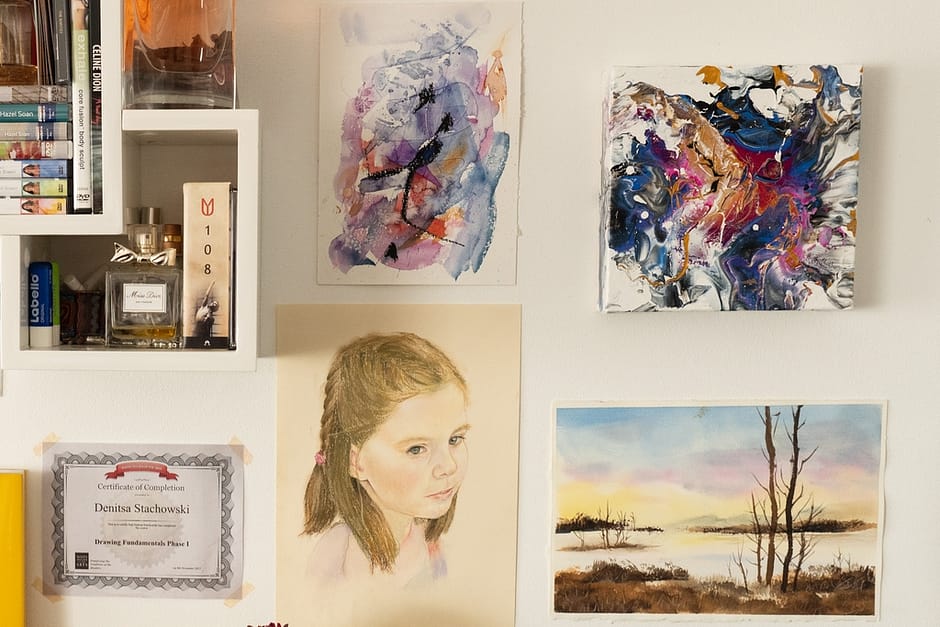February 14
I Failed And It Made Me Happy
0 comments
I had the brilliant idea a couple of weeks ago of wanting to hang my own piece of art on a wall at home.
I wanted it to be big though, which is kind of a problem. Most of the art I‘ve been creating is in sketchbooks and not suited for hanging. I already have a few flower watercolor paintings hanging at home, but this time I wanted something different.
I considered soft pastels. But, painting a large painting with soft pastels seemed much too complicated and cumbersome. I don't have a dedicated studio so I'd have to take out the pastels and put them away every time I paint. Finally, I would have to figure out how to frame the painting as soft pastels are fragile.
Then it dawned on me - big art that looks good on walls is abstract art! It also shouldn‘t be too difficult to do or take too much time, right?
(I know this is a big oversimplification. For me, there’s Abstract Art, and abstract art that just looks good on walls. I’m talking of decorative art.)
I got excited and instead of going to sleep, searched YouTube for tutorials. I found a video of a lovely lady who did exactly what I wanted to do. She created a few pieces of abstract art to decorate her walls in a way that looked easy and doable to me. She said she got inspired by Rinske Douna. Rinske is an abstract artist who does captivating YouTube tutorials on acrylic pouring. I checked her out, of course, and her art looked so beautiful and effortless! It always seems easy when you watch professionals do their magic, right? I knew this is just how it seems. Rinske has a great sense for choosing her colors, getting the right consistency of the acrylics, and a lot of experience in controlling and directing the flow…
I was inspired and couldn’t wait to try it myself. I don‘t have much experience with acrylics, and didn‘t have much paint left in my stash, so I needed to get a few colors. Unfortunately, the art supplies stores here are closed due to Covid. Choosing the colors online, without being able to see them in real life, was a bit difficult. I also ordered a couple of 20x20cm and 30x30cm canvases. I figured smaller ones would be easier (and cheaper) to learn and experiment on.
The next afternoon when I was off work I decided to give it a try. I almost didn‘t do it, as I thought I didn‘t have enough time… I had it on my to-do list though, and I hate not checking off my to-dos.
I accepted that my first few paintings (at least) will not look good and I should enjoy the learning experience instead.
I quickly chose four or five colors, got my hairdryer and gas torch ready, and got to work. Mixing the colors took me the most time. I wasn't sure how much paint I needed, and also how fluid it should be. Sure enough, I found out my paint was indeed too thick and almost didn‘t flow.
After I finished, I looked at my painting. I saw all its imperfections, all the things that didn‘t turn out as I wanted…

And still, I felt happy, and even a little proud of what I did.
This small 20x20cm painting needed a few days to dry because of the thick paint I used. After that, I sealed it with varnish and hung it next to a few other „learning experience“ pieces.

I can’t wait to try acrylic pouring again in the coming weeks, and maybe one day I will get my big painting to hang on the wall. 🙂
I also bought two books on abstract art - Abstrakt Malen by Petra Thölken (also on YouTube) and Abstract Art Painting by Debora Stewart. Funnily I never understood or was even interested in abstract art. Then, a few years back I watched two of Debora Steward’s classes on ArtistsNetwork TV, which were amazing. They started my love and appreciation for soft pastels and abstract art. Never say never.
Tags